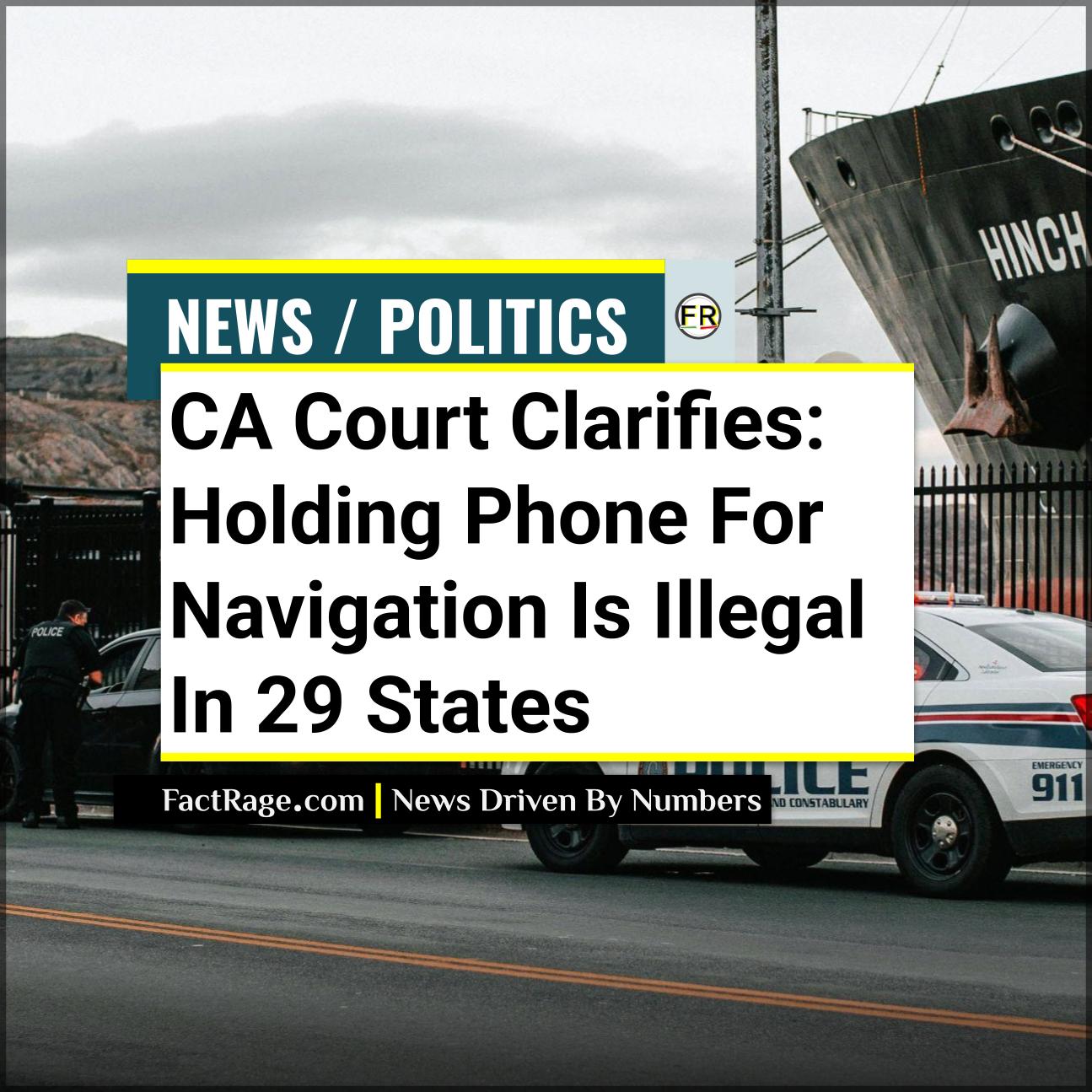SACRAMENTO, CA – A recent California appeals court ruling reinforced the state’s hands-free driving law, determining that merely holding a wireless telephone while driving, even for navigation purposes, constitutes an illegal operation of the device.
Key Facts
- California Ruling – The California Court of Appeal for the Sixth Appellate District ruled that holding a phone to view a mapping application while driving violates Vehicle Code section 23123.5, subdivision (a).
- Legal Precedent – The ruling overturned a lower court’s decision that defined ‘operating’ as requiring active manipulation, stating the law aims to reduce distracted driving by prohibiting holding and operating a handheld wireless telephone unless used hands-free.
- Broader Implications – This decision aligns with the intent of hands-free laws in 29 states and the District of Columbia, emphasizing that minimizing any handheld interaction with mobile devices while driving is key to road safety.
The California ruling provides new clarity on what constitutes illegal cellphone use behind the wheel, extending beyond texting or talking to simply holding the device for visual information like GPS.
How Holding a Phone for GPS Violates California Law

The case of The People v. Nathaniel Gabriel Porter centered on a driver ticketed for looking at a mapping application while holding his phone. Porter initially won an appeal in a lower court, which argued that “operating” a phone required “active use or manipulation of the device.” However, the California Court of Appeal disagreed, reversing the decision and reinstating Porter’s conviction.
The appellate court’s ruling emphasized that the 2016 amendment to Vehicle Code section 23123.5(a) was designed to broaden the scope of prohibited activities. Lawmakers, recognizing smartphones as “pocket-sized computers,” intended the law to prohibit wireless phones from being used “for any purpose” while driving if held in hand, including “all distracting mobile device-related behavior.” This includes activities like playing games, Browse the internet, and, as the recent ruling confirms, simply looking at a map on a handheld device. The law explicitly exempts mounted phones and those operated with a single swipe, reinforcing the focus on hands-free interaction.
What the California Ruling Means for Drivers in Other States
While this specific ruling directly impacts California drivers, its implications resonate across the 29 states and the District of Columbia that have adopted similar hands-free driving laws. These laws generally prohibit drivers from holding and using wireless communication devices while operating a motor vehicle.
For example, states like Washington, Oregon, and New York also have primary enforcement laws that make it illegal to hold or use a cell phone while driving, regardless of whether it’s for talking, texting, or navigation. The intent behind these laws is consistent: to minimize driver distraction and enhance road safety. The California court’s interpretation of “operating” as encompassing merely holding the device for viewing purposes provides a precedent that could influence how similar laws are enforced and interpreted in other jurisdictions. Drivers should consult their local Department of Motor Vehicles or state statutes for specific details regarding their state’s hands-free regulations.
Understanding Distracted Driving Laws and Their Impact
Distracted driving, often involving mobile devices, remains a significant contributor to traffic accidents and fatalities. According to the National Highway Traffic Safety Administration (NHTSA), 3,308 people were killed in distraction-affected crashes in 2022. This figure represents a slight increase from 3,242 in 2021. Understanding the nuances of hands-free laws, such as the one clarified by the California court, is crucial for public safety.
The ongoing evolution of cellphone technology and its integration into daily life presents challenges for legislators and courts in defining what constitutes safe driving practices. The California ruling highlights a trend towards stricter interpretations of distracted driving laws, pushing drivers to adopt truly hands-free solutions for navigation and communication to keep their focus on the road. The goal is to reduce distracted driving incidents, ensuring that drivers maintain full attention on their surroundings rather than their mobile devices.
You can read the ruling by the California Sixth Appellate District Court here









